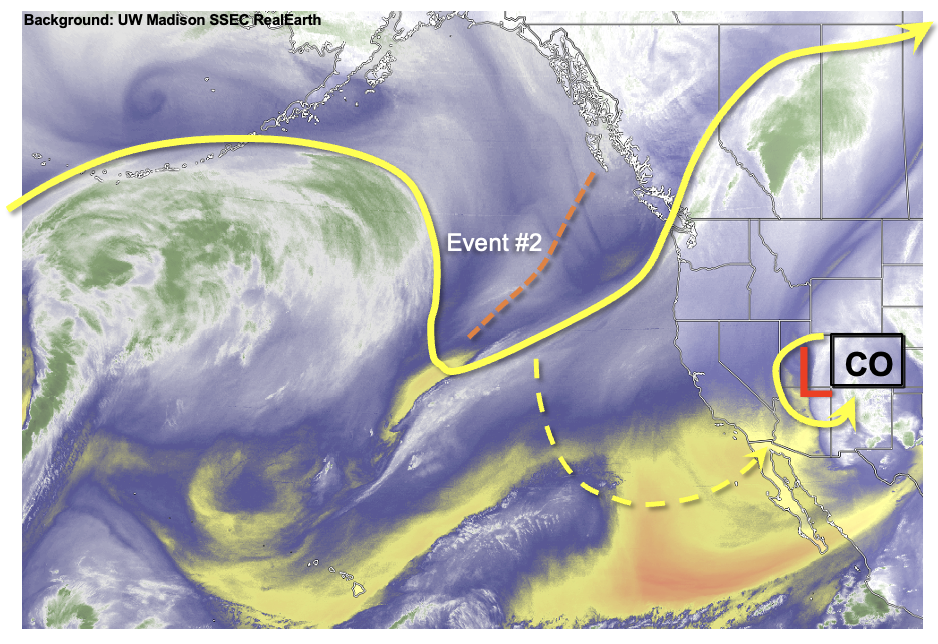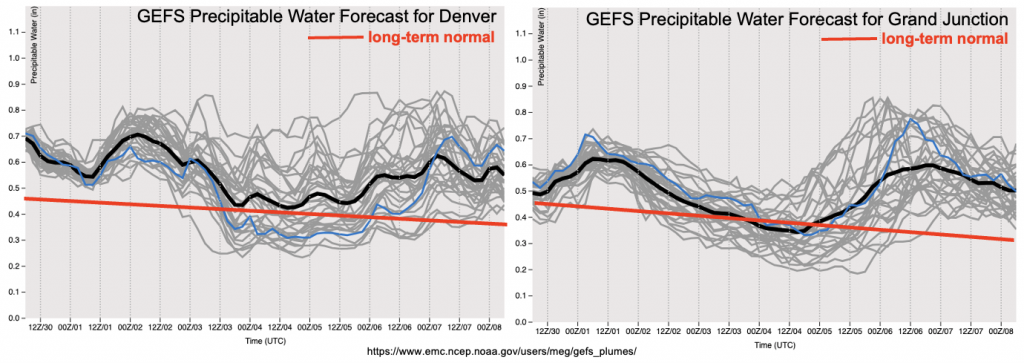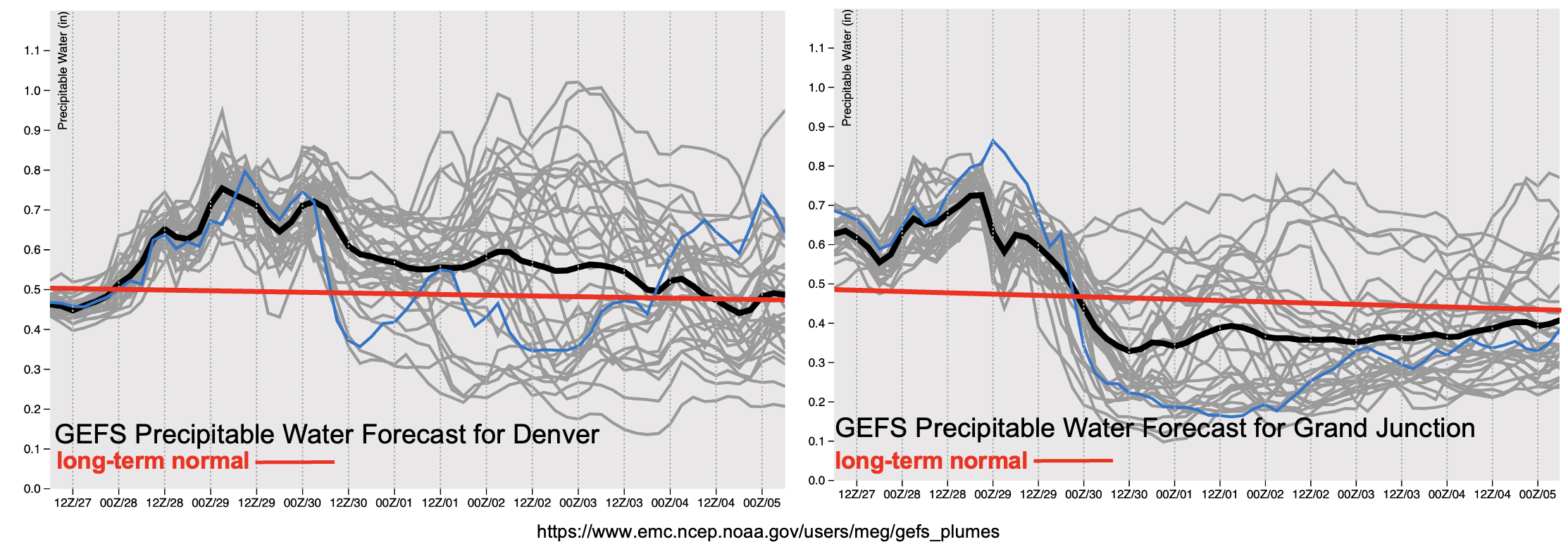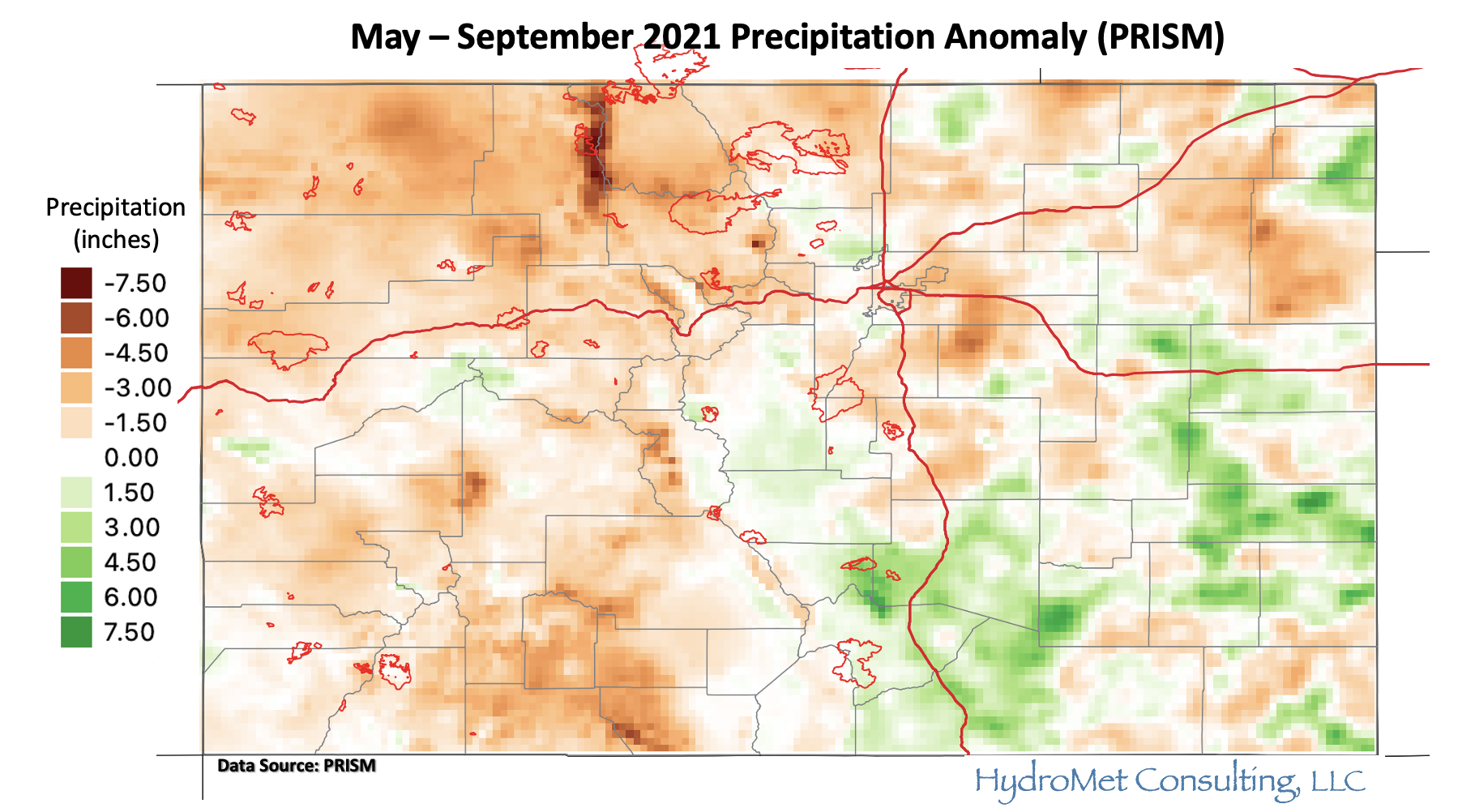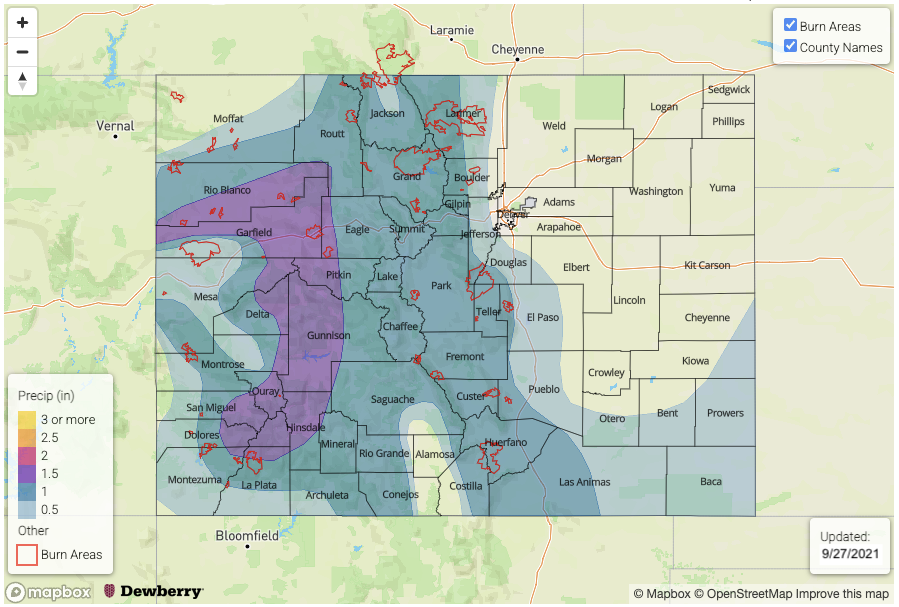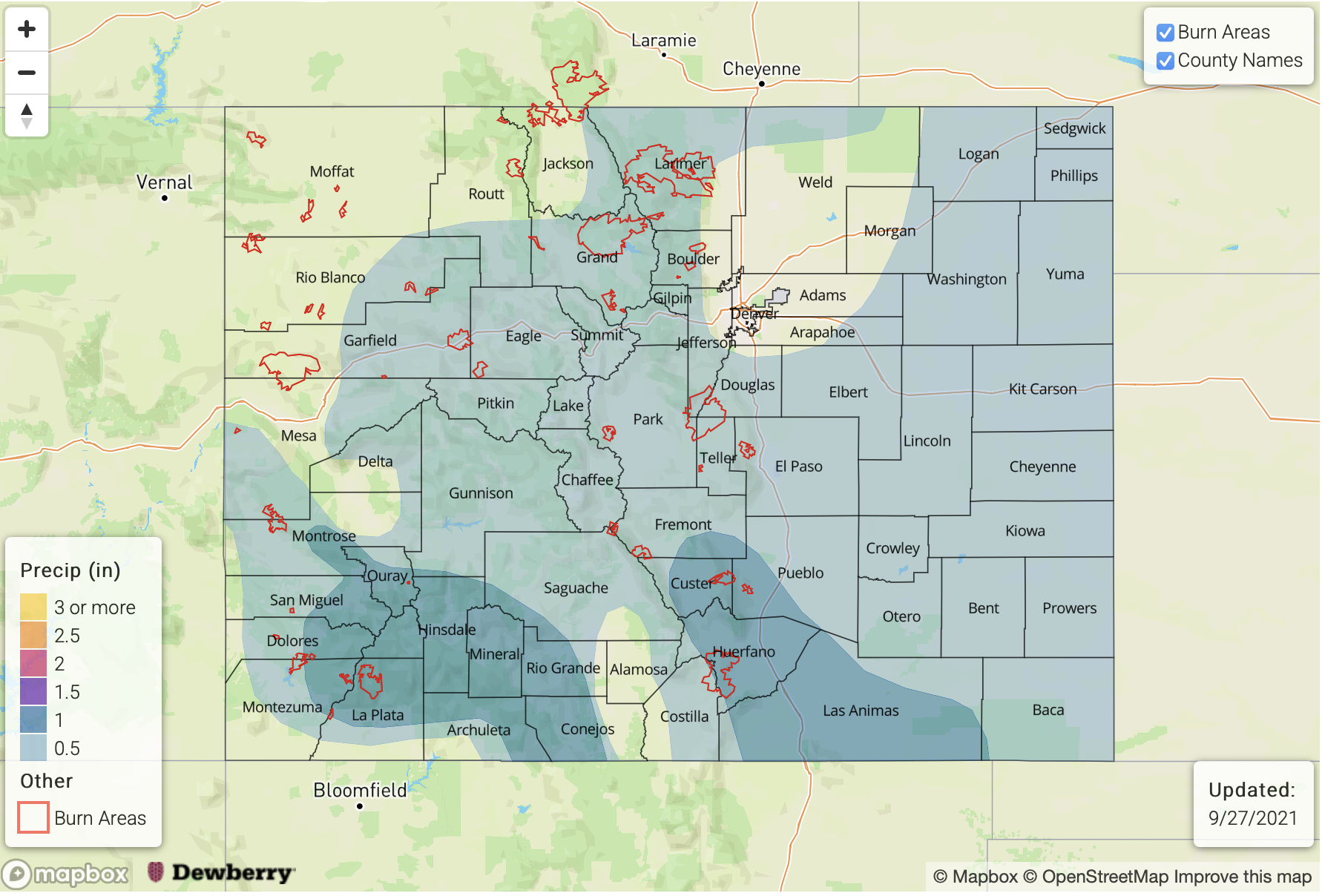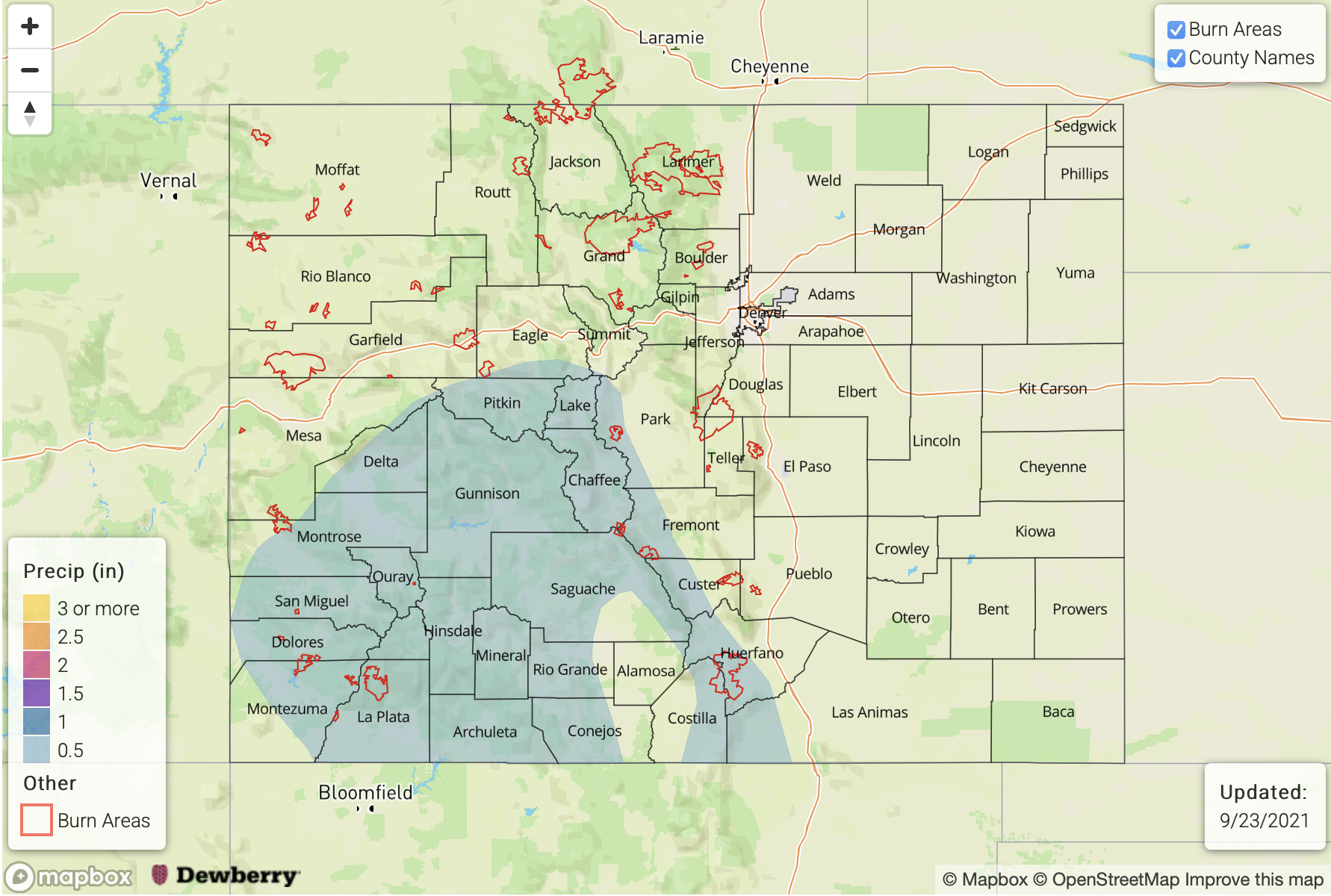Issue Date: Thursday, September 30th, 2021
Issue Time: 3PM MDT
Valid Dates: 10/1-10/15
Note: This is the final Flood Threat Outlook of the 2021 forecast season. The program is scheduled to return on May 1, 2022. It has been a pleasure to serve the state of Colorado!
Fall-like weather has finally overtaken most of Colorado after a seemingly endless Indian Summer. Denver will very likely finish the season with 59 days above 90F, or the fifth highest total since records began in the 1870s. Pueblo looks to finish with 85, also the fifth highest total since records started around 1890. Across the Continental Divide, Grand Junction will likely finish with 78 days above 90F, or tied for the ninth highest total since records began in the 1890s. Below, we see that, in consistency with the 90 degree day counts and our perception, summer has been very warm with the entire state running above average. Large parts of the state have seen temperatures of 2F or more above normal over a 120-day stretch, certainly a noteworthy signal of heat.
If we zoom out a bit, okay perhaps more than a bit, to the entire planet, below we see anomalies of Outgoing Longwave Radiation (OLR) since early July (roughly the start of monsoon season). Positive anomalies essentially imply “sunnier” than normal conditions where the atmosphere is emitting more radiation than normal, to space. Negative values imply the opposite, and generally coincide with more cloudy conditions. We can see that most of the western United States saw above normal OLR, with the very small sliver of negative values over the Gulf of California representing the significantly above normal monsoon over parts of AZ and NM.
When we consider the observations above, it is perhaps a bit surprising that our wildfire activity was not as active as in previous years. Below, we see that higher-elevation burn acreage in 2021 will (likely) end up much below the normal value of the past two decades. However, keep in mind that this “average” includes some extraordinary years such as 2020 and 2018, so there is a case to be made that 2021 was still likely above the longer-term normal value (i.e. if we extend the record back before 2000; however, data quality becomes more suspect). Regardless, we are not complaining!
Now let’s shift the focus back to the Outlook, the final one of the 2021 season. As seen in the water vapor imagery below, we are currently experiencing an active weather pattern with a disturbance traversing the state. This disturbance will cause rain and snow across mainly southern Colorado through Saturday (Event #1). Although a few weaker thunderstorms are possible, only short-term moderate intensity rainfall is expected and there is No Apparent Flood Threat. Instead the San Juan Mountains, San Luis Valley, Southeast Mountains, Raton Ridge and Southeast Plains will experience very welcomed, widespread precipitation.
After the passage of Event #1, an upper-level ridge will develop over the northern Great Plains, with Colorado lying on its western periphery. To the west, an incoming trough will have a hard time progressing into the ridge, and a large part of it will split from the flow. This cut-off will take it’s sweet, old time to make it into Colorado, but it will eventually, along with at least a brief surge of monsoonal-type moisture. With warmer temperatures, perhaps 5F-8F above seasonal normal, a widespread predominantly-rain event is expected for the Western Slope (Event #2). Certainly welcome news! Isolated moderate-intensity rainfall is also appearing more likely with this event, but there is currently No Apparent Flood Threat as instability will be minimal.
The weather looks to get more interesting after the passage of Event #2, starting roughly around October 10th. Guidance is showing a strong consensus suggesting the breakdown of the Great Plains ridge, and a development of a large western United States trough (Event #3). As shown in the Precipitable Water (PW) plumes, below, even after the passage of Event #2, PW is expected to remain largely above average across the state. With large-scale synoptic forcing, and moist upslope flow, we are likely to see the repeated, widespread accumulating snow over the entire higher terrain. Lower elevation precipitation chances also look to be above average, although the total amounts are currently expected to remain below 0.5 inches. As can be expected with the cooler conditions, instability will be minimal or non-existent so there is No Apparent Flood Threat with this event either.
The identified precipitation events are described in more detail below.
Event #1: Friday – Saturday (October 1 – October 2)
Widespread Rain, Weaker Storms And High-Elevation Snow For Southern Colorado, But No Apparent Flood Threat
An active Friday is expected over southern and southeastern Colorado as the disturbance moves across. Widespread rain and snow showers are expected over the San Juan Mountains, San Luis Valley, Southeast Mountains and Raton Ridge where up to 1 inch of storm total precipitation will be possible. Isolated weak thunderstorms cannot be ruled out in this region. Significant high-elevation snow is expected, especially over the Sangre de Cristo mountains where over 1 foot could accumulate by late Friday.
Further east towards the OK/KS border, more convective activity is expected amidst the steady rainfall, where max hourly rainfall up to 0.8 inches looks possible, along with storm total precipitation in the 1-1.5 inch range locally.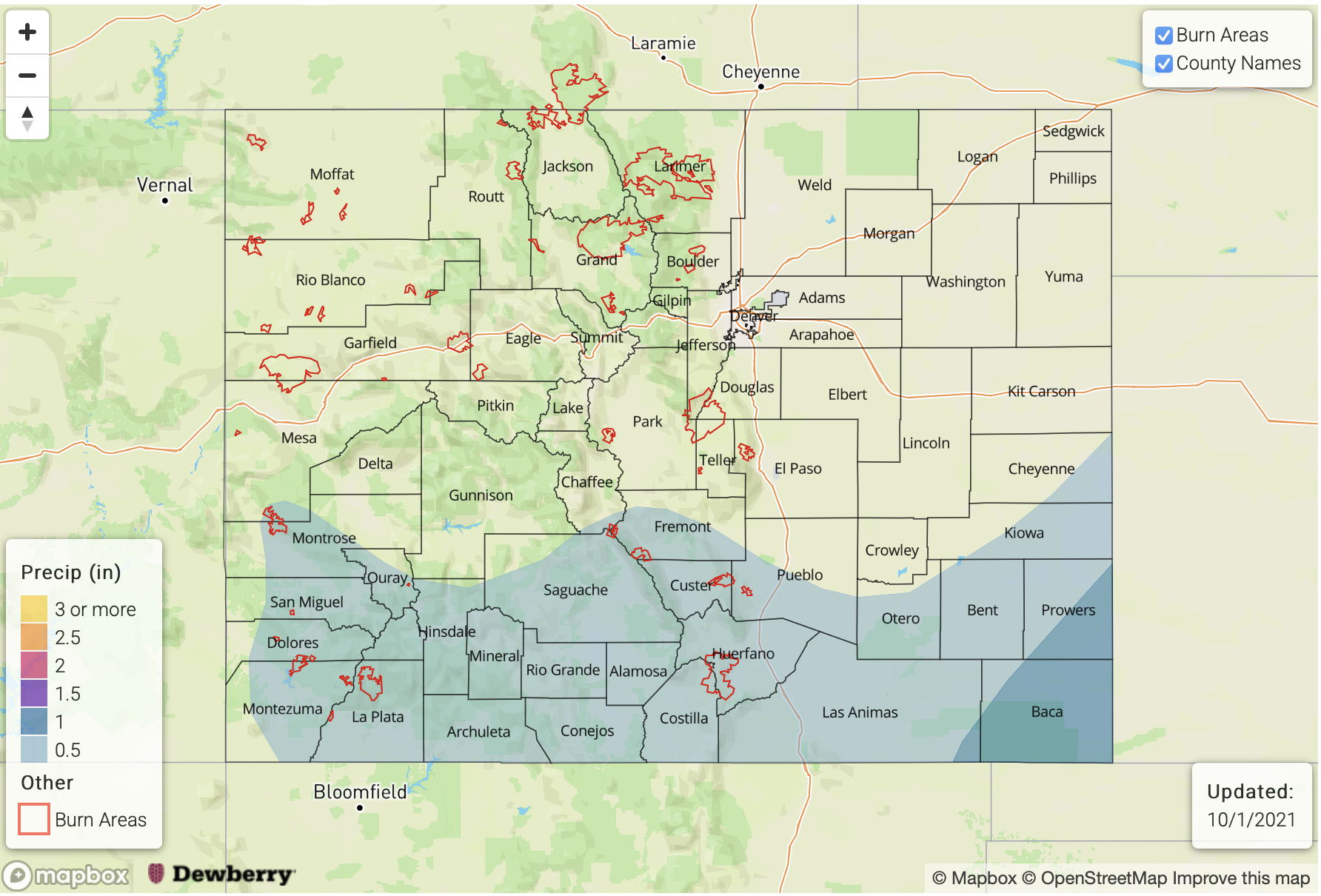
Isolated higher terrain rain and snow showers could continue into Saturday, though with little meaningful accumulation.
Event #2: Wednesday – Thursday (October 6 – October 7)
Showers and Weaker Storms Possible Over Western Slope, But No Apparent Flood Threat
Another cut-off low will push a weak monsoonal surge into western Colorado, fueling a 24 to possibly 48-hour period of precipitation activity on Wednesday-Thursday. At this time, max 1-hour rainfall up to 0.7 inches looks to be possible, although this will be very isolated in nature. However, the Pine Gulch and Grizzly Creek burn scars could be affected. Overall, a widespread 0.5 to 0.8 inches of precipitation is expected across the Western Slope.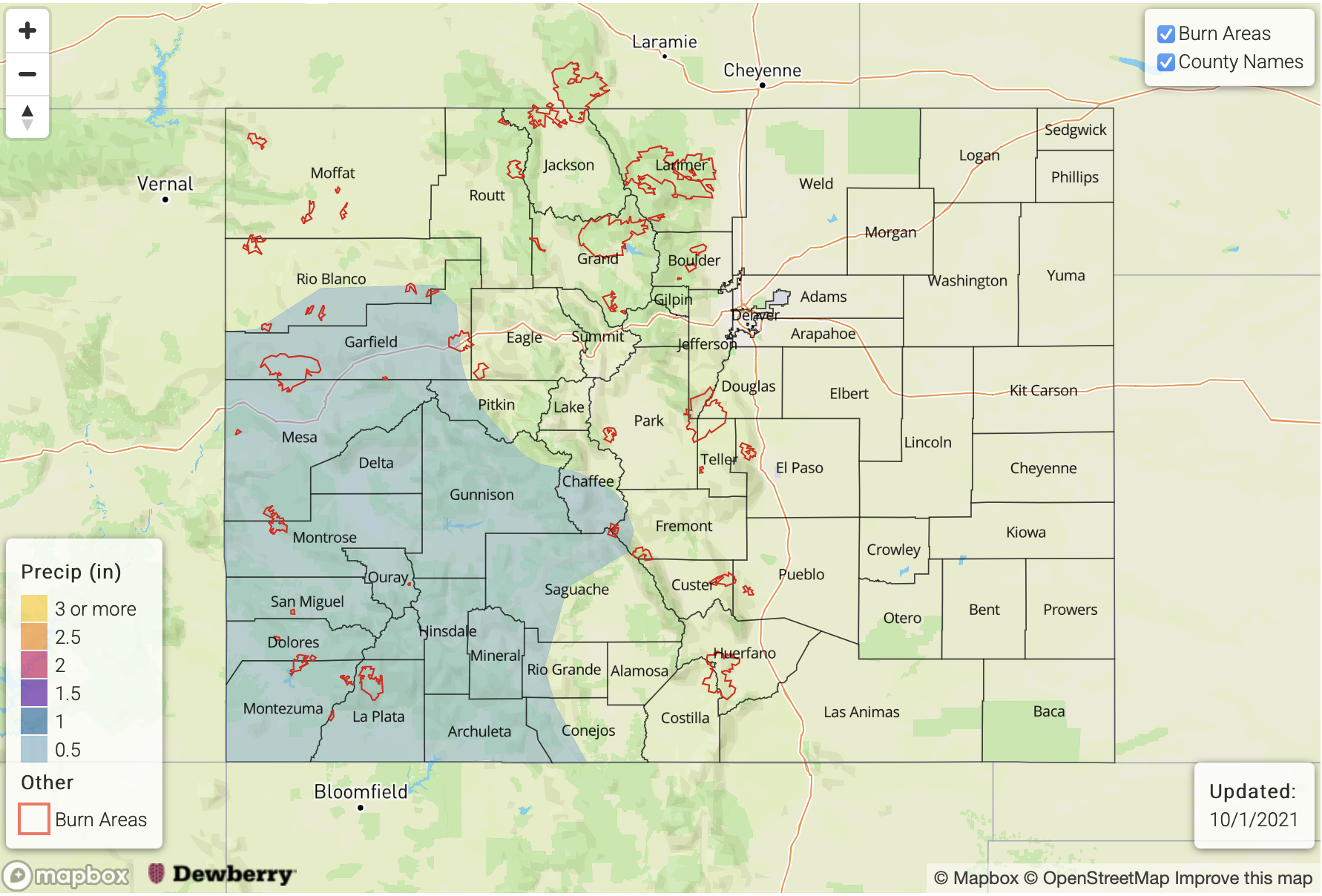
Event #3: Sunday – Friday (October 10 – October 15)
Cooler Conditions Expected With Frequent Rain/Snow; No Apparent Flood Threat
Cooler conditions are expected to develop by Sunday, October 10, with temperatures expected to run at least 5F below normal for the foreseeable future. At least several pulses of precipitation are expected, though this will mainly be in the form of higher elevation upslope rain and snow showers. At this time, perhaps up to 0.5 inches will be possible through the course of the event. Thus, no precipitation map is provided.




